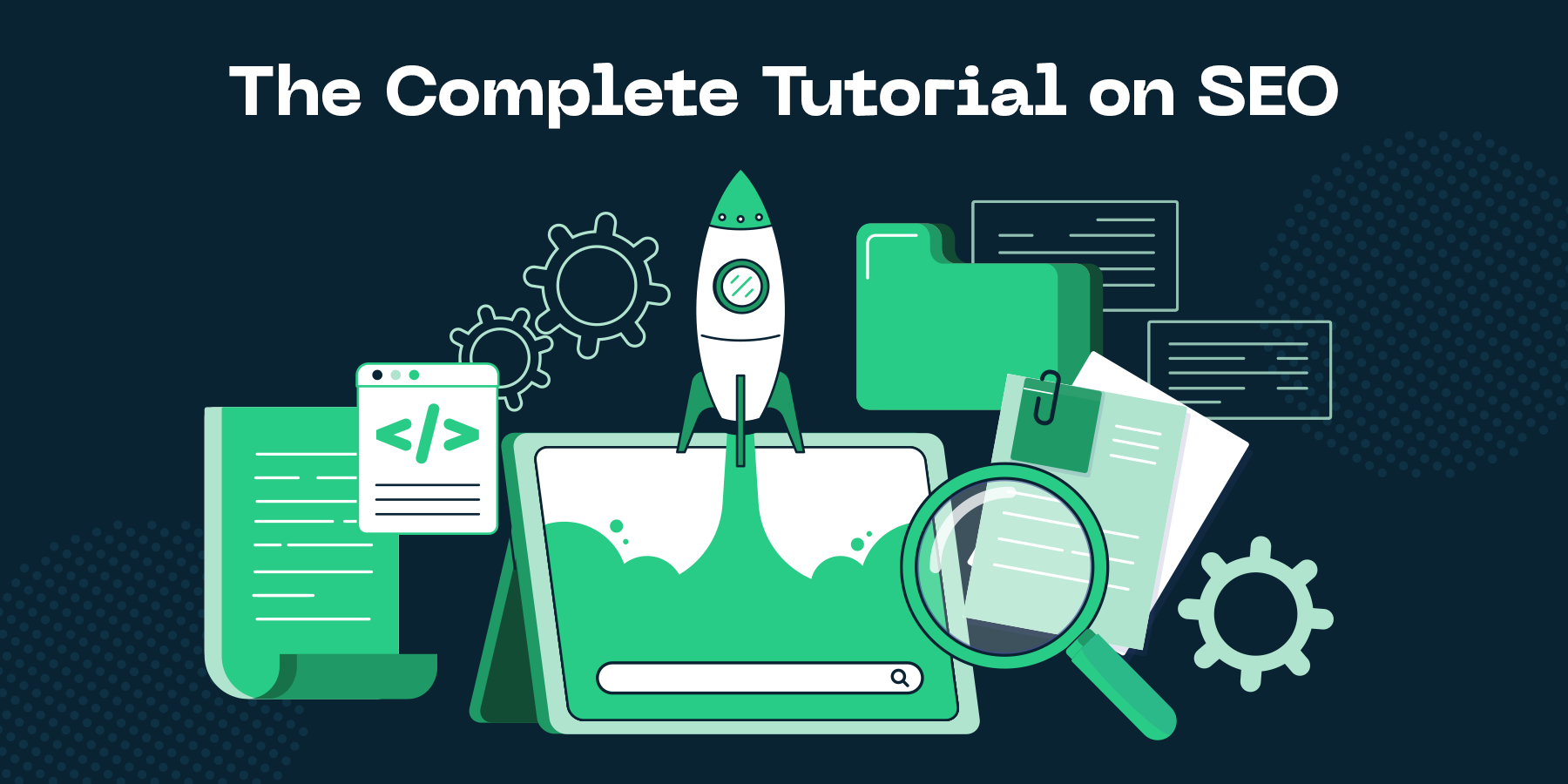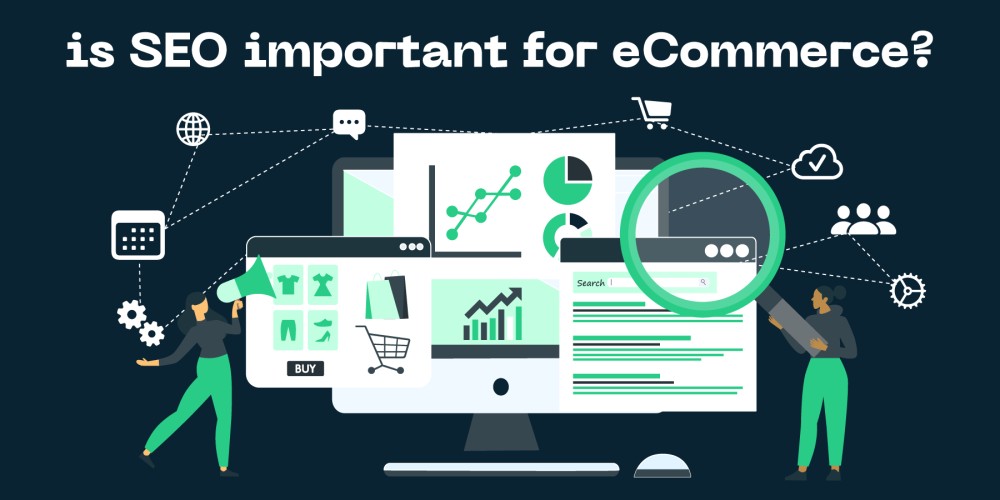Ecommerce SEO Tutorial: Step-by-Step Guide for Your Store

Key Takeaways
- SEO is operational, not optional. Without a systematic SEO strategy, even great products and designs can get buried behind competitors.
- Keyword research is your foundation. Success begins with understanding customer intent and targeting the right terms for maximum visibility and conversion.
- Technical SEO is critical for scalability. Without a fast, crawlable, mobile-optimized site, even the best content and links can't perform.
- Automation is the future. Platforms like ConvertMate transform SEO from a manual task into a scalable growth engine — saving time while accelerating results.
In today’s eCommerce landscape, competition isn’t just growing — it’s intensifying at an unprecedented pace. By 2025, organic search visibility has become one of the single most important drivers of sustainable, profitable growth for online stores.
Yet the reality is stark: Without a strong SEO foundation, even the best products, most beautiful websites, and highest advertising budgets can fall short of their potential.
eCommerce SEO is no longer optional — it’s operational. It determines whether your store gets found, clicked on, and purchased from — or whether it disappears behind faster, smarter competitors.
This guide walks you step-by-step through the latest frameworks, best practices, and strategic actions you need to optimize your store’s SEO, drive consistent traffic, and unlock long-term growth.
Understanding eCommerce SEO Fundamentals
eCommerce SEO is the process of optimizing an online store’s website structure, content, and external signals to rank higher in search engine results — making it easier for potential customers to find your products organically.
It’s not just about attracting traffic — it’s about attracting the right traffic: buyers who are actively searching for what you sell. eCommerce SEO integrates technical excellence, strategic content creation, user experience design, and reputation building into one cohesive growth engine.
Core Components of eCommerce SEO:
➔ Keyword Research - Identifying the exact words, questions, and phrases your potential customers use when searching for your products — and building your content and pages around them.
➔ On-Page Optimization - Optimizing individual product pages, category pages, and landing pages to align with target keywords, improve user engagement, and maximize conversion potential.
➔ Technical SEO - Ensuring your site’s architecture, loading speed, mobile experience, and crawlability are fully optimized so that search engines can easily discover, index, and prioritize your pages.
➔ Off-Page SEO - Building trust and authority through external signals, primarily high-quality backlinks from reputable sources in your industry. For instance, contributing to platforms that list remote SEO positions can enhance your site's authority and visibility.'
➔ Local SEO - Optimizing your store for location-based searches if you serve specific regions — leveraging Google My Business, local keywords, and customer reviews to dominate geographically relevant results.
➔ Performance Monitoring - Continuously tracking your SEO performance across key metrics — such as rankings, traffic, and conversions — and adjusting strategies based on real data.
Step 1: Conduct Thorough Keyword Research
Keyword research isn’t just the first step in eCommerce SEO — it’s the foundation. Without the right keywords, even the best-optimized pages will struggle to capture relevant traffic or convert visitors into customers.
Choosing the wrong keywords means attracting the wrong audience — or worse, no audience at all.
Effective keyword research directly impacts:
- Store visibility on search engines
- Click-through rates (CTR) from organic search
- Conversion rates and revenue growth
Using Tools Effectively
Several powerful tools simplify the process of discovering high-value keywords:
- ConvertMate: Automate keyword discovery with AI-driven suggestions tailored to your store’s products, categories, and target customer intent.
- Google Keyword Planner: Uncover keyword volumes, competition levels, and cost-per-click estimates.
- Answer The Public: Find common questions and search phrases related to your products.
- Exploding Topics: Identify emerging trends and rising keywords early — before they become saturated.
When using tools:
- Focus on relevance over raw search volume.
- Look for buying signals in keyword phrasing (e.g., "buy," "best," "affordable").
Targeting by Intent: Informational, Navigational, Transactional
Not all keywords serve the same purpose — understanding search intent is critical.
- Informational Intent: Users seek information (e.g., "how to choose running shoes"). Ideal for blog posts, guides, and early-funnel content.
- Navigational Intent: Users are looking for a specific brand or site (e.g., "Nike running shoes official site"). Useful for branded keyword strategies.
- Transactional Intent: Users are ready to buy (e.g., "buy waterproof running shoes online"). Primary focus for product and category pages.
Best Practice: Prioritize transactional keywords for your product and collection pages, but build supporting informational content to nurture broader audiences.
Long-Tail and Question Keywords Strategy
Short, high-volume keywords are tempting but often fiercely competitive. Instead, long-tail keywords and question-based queries offer:
- Higher conversion rates
- Lower competition
- More precise alignment with buyer intent
Examples:
- Short keyword: "headphones" (high competition, vague intent)
- Long-tail keyword: "best wireless headphones under $100" (clear, purchase-ready intent)
Building pages and content around long-tail keywords allows smaller or newer stores to carve out valuable niches in competitive markets.
How to Assess Keyword Difficulty
Not all keywords are realistic targets — especially for newer stores. Key evaluation factors:
- Competition Level: Tools like ConvertMate show keyword difficulty scores.
- SERP Analysis: Manually review the first page of Google results. Are you competing with large, entrenched brands?
- Domain Authority Check: If top-ranking sites have significantly higher domain authority, target easier opportunities first.
Start with attainable keywords where you can realistically rank within 6–12 months — then move up to more competitive targets as your site authority grows.
Step 2: Optimize On-Page SEO
Strong on-page SEO ensures that every product, category, and landing page communicates value — both to search engines and to potential customers. It’s not just about inserting keywords — it’s about creating clear, compelling entry points that drive clicks, engagement, and conversions.
Writing Effective Title Tags and Meta Descriptions
Title Tags:
- Keep titles between 50–60 characters to avoid truncation in search results.
- Place the primary keyword as close to the beginning as possible.
- Write clear, compelling titles that highlight the product's core benefit, not just its name.
Meta Descriptions:
- Write 120–155 character summaries that naturally include your target keyword.
- Focus on value propositions and calls to action (e.g., "Shop now," "Discover more," "Limited-time offer") to increase click-through rates.
- Treat meta descriptions as a conversion opportunity, not just a technical requirement.
Creating Unique, Value-Driven Product and Category Content
Generic product descriptions are a fast track to SEO underperformance. Best Practices:
- Unique Content: Avoid using manufacturer-provided copy. Tailor each description to your brand voice and customer needs.
- Product Storytelling: Highlight product features and emotional benefits ("Built for speed and comfort, designed for everyday champions").
- Multimedia Integration: Include high-quality images, videos, and sizing guides to enrich the user experience and lower bounce rates.
- Internal Linking: Naturally link to related products and categories to strengthen site structure and keep users engaged.
Strategic Keyword Placement and Density
Keyword usage must be natural, intentional, and user-first. Key Guidelines:
- Include the primary keyword within the first 100 words of the page content.
- Use keywords in:
- Title Tag
- Meta Description
- H1 and H2 Headings
- Alt text for images
- Maintain a keyword density between 0.5% and 2% to avoid keyword stuffing penalties.
- Blend in semantic variations and related terms for richer, more natural content.
UX and Mobile-First Design
UX isn’t separate from SEO — it’s central to it. If your pages don’t load quickly, display clearly, and guide users intuitively, rankings (and revenue) will suffer. Key UX Elements:
- Navigation Simplicity: Ensure users can find products easily with minimal clicks.
- Mobile Optimization: Design mobile-first, not just mobile-friendly. Responsive layouts, touch-friendly buttons, and fast mobile load times are critical.
- Clear CTAs: Place obvious, action-driven buttons (“Add to Cart,” “See Details”) in prominent positions.
- Accessibility: Use alt text for images, proper heading structures, and high-contrast colors to accommodate all users.
Step 3: Master Technical SEO
Technical SEO forms the foundation that makes everything else — content, keywords, backlinks — actually work. Without a strong technical setup, even the best-optimized pages will struggle to rank, index, or deliver consistent results.
Building a Strong, Crawlable Site Structure
Search engines prioritize sites they can easily crawl and understand.
Key Actions:
- Flat Architecture: Structure your site so that every page is accessible within three clicks from the homepage.
- Logical URL Hierarchy: Use clean, keyword-driven URLs organized by product categories.
- Internal Linking: Strategically link between related products, collections, and blog content to help distribute page authority.
Mobile Optimization and Page Speed Essentials
With over 70% of eCommerce traffic now coming from mobile devices, mobile-first optimization is no longer optional.
Core Tactics:
- Responsive Design: Ensure layouts adapt cleanly across devices and screen sizes.
- Page Speed: Compress images, defer offscreen loading, minimize JavaScript and CSS bloat.
- Core Web Vitals: Target passing scores for Largest Contentful Paint (LCP), First Input Delay (FID), and Cumulative Layout Shift (CLS).
Tools to Monitor:
- Google PageSpeed Insights
- GTmetrix
- Web.dev
Implementing Structured Data (Schema Markup)
Structured data helps search engines interpret your pages more effectively and enables enhanced search result features (rich snippets).
Recommended Schemas:
- Product Schema: Highlights prices, availability, and reviews directly in search results.
- Review Schema: Displays product ratings and user-generated feedback.
- Breadcrumb Schema: Improves internal site navigation visibility in search listings.
Use Google’s Rich Results Testing Tool to validate proper schema implementation.
Managing Sitemaps, Robots.txt, Canonical Tags, and SSL Security
Precision in technical management avoids major SEO pitfalls.
Checklist:
- Sitemap: Submit a clean, updated XML sitemap to Google Search Console and Bing Webmaster Tools.
- Robots.txt: Only block non-essential pages (e.g., admin, cart pages). Never block category or product pages unintentionally.
- Canonical Tags: Consolidate duplicate pages by referencing the preferred version, preventing content dilution.
- SSL Certificate (HTTPS): Ensure full HTTPS encryption — it’s a confirmed ranking factor and critical for building customer trust.
Proactively Fixing Indexing and Crawlability Issues
Ongoing technical maintenance is essential to protect and grow your rankings.
Key Monitoring Steps:
- Review Google Search Console weekly for indexing errors, mobile usability issues, and URL anomalies.
- Fix broken links (404 errors), redirect chains, and server errors (5xx) promptly.
- Audit noindex tags, canonical tags, and disallowed URLs regularly.
Expert Tip: Consider a Managed SEO Solution
Managing SEO manually across hundreds or thousands of product pages is no longer sustainable in 2025. To stay competitive, brands need faster, smarter, and more scalable solutions — and that’s exactly where ConvertMate comes in.
ConvertMate is an AI-powered SEO platform built specifically for eCommerce growth. It automates and optimizes your store’s SEO across every critical area — without adding workload to your internal team.
Key benefits of using ConvertMate:
- AI-Driven Keyword Optimization: Automatically discover, prioritize, and apply the right keywords to your products, categories, and landing pages.
- Automated On-Page SEO: Title tags, meta descriptions, alt text, and structured data are continuously optimized in real-time to meet evolving SEO standards.
- Technical SEO Maintenance: ConvertMate monitors and fixes site health issues like broken links, missing schema, and indexing errors before they impact your rankings.
- Scalable Content Creation: Generate SEO-optimized product descriptions, collection texts, and blog posts at scale — aligned with search intent and conversion goals.
- Performance Analytics: Gain visibility into traffic lifts, ranking improvements, and content performance through a centralized, easy-to-use dashboard.
Start your journey with ConvertMate today — and get your first 7 days completely free. No risk, no commitments — just faster rankings, smarter optimization, and real results.
Frequently Asked Questions
1. What is eCommerce SEO, and why is it important?
eCommerce SEO optimizes your store's pages to rank higher in search engines, attracting more qualified buyers organically. It’s essential for sustainable, high-ROI growth without depending solely on paid ads.
2. How long does it take to see results from eCommerce SEO?
SEO is a long-term strategy. Most stores start seeing measurable improvements within 3 to 6 months, depending on competition, site authority, and execution quality.
3. What are the most important first steps in SEO for a new eCommerce store?
Start with keyword research, optimize your product and category pages, ensure your site is technically sound (fast, mobile-optimized, crawlable), and build a solid internal linking structure.
4. How does ConvertMate help automate eCommerce SEO?
ConvertMate uses AI to automate keyword research, optimize on-page elements, fix technical issues, generate SEO content, and provide real-time analytics — allowing stores to scale SEO effortlessly.
5. What’s the difference between technical SEO and on-page SEO?
Technical SEO focuses on backend elements like site structure, page speed, mobile performance, and crawlability. On-page SEO optimizes visible elements like content, headings, and metadata.
6. How important is mobile optimization for eCommerce SEO in 2025?
Absolutely critical. Over 70% of eCommerce traffic comes from mobile. Sites that aren’t fast and seamless on mobile devices risk losing rankings and conversions.
7. Should small or new stores invest in SEO right away?
Yes. SEO builds long-term equity. Starting early helps new stores establish authority, rank for attainable keywords, and compound organic traffic growth over time.
Summary
Organic search isn’t slowing down — and neither is your competition. In 2025 and beyond, disciplined, systematic SEO execution is no longer a "nice-to-have." It’s the engine that drives sustainable growth, brand equity, and compounding revenue for eCommerce stores.
Mastering the fundamentals — from keyword research and technical SEO to link building and UX — gives your store the foundation it needs to dominate in an increasingly competitive digital landscape.
But consistent success requires more than one-time optimizations. It demands continuous improvement, data-driven decisions, and the operational agility to evolve with every algorithm update and market shift.


